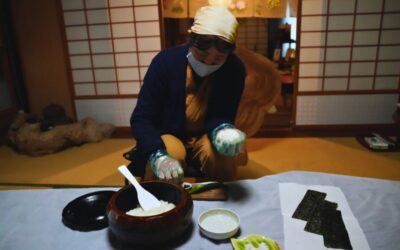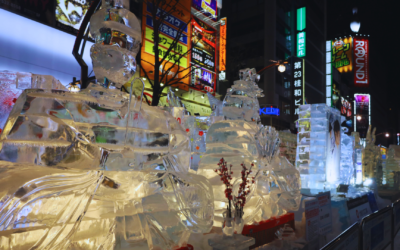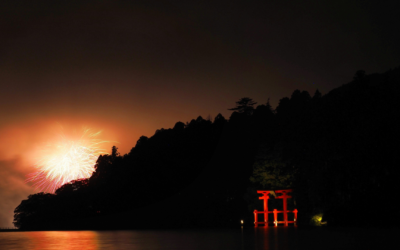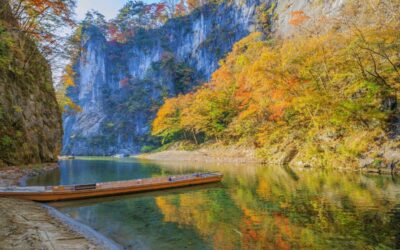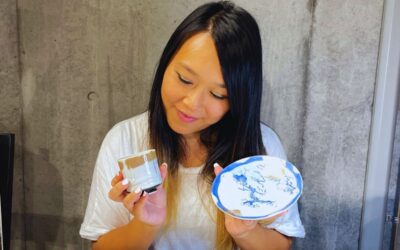Planning your stay in Osaka or Kyoto? While these cities offer plenty to explore, there are also fantastic day trips nearby that let you experience Japan’s rich history, stunning nature, and unique culture beyond the urban buzz. From majestic castles and serene temples to charming onsen towns and scenic coastal escapes, these destinations are perfect for adding variety and depth to your itinerary without straying too far. Here are some of the day trips we recommend if you’re staying around Kansai:
Nara Day Trip

From Kyoto Station: 40mins
From Osaka Station: 50mins
As Japan’s first permanent capital, Nara is steeped in history, spirituality, and tradition. Just a short train ride from Kyoto or Osaka, this ancient city is home to some of the country’s most iconic landmarks.
At the heart of Nara lies Nara Park, where over a thousand free-roaming deer wander among centuries-old temples and serene pathways. If you’ve always wanted to see deer up close, this is the place to go. Just be careful because these are still wild animals and might get a bit too excited if you show them food. Only feed them deer crackers, which you’ll find on sale around the park, and for your safety, try not to let yourself get surrounded by the deer since they might bite your clothes or even give you a headbutt!
Right in the middle of the park is Tōdaiji Temple, home to the Great Buddha, one of the world’s largest bronze statues and a symbol of Nara’s strong Buddhist presence. If you’re up for a fun challenge, there’s a pillar behind the Buddha statue with a small hole at its base, said to be the same size as the Great Buddha’s nostril. It is believed that if you can squeeze through, you’ll be rewarded with enlightenment in your next life. This test of flexibility draws plenty of brave visitors, so there might be a queue, but it’s definitely worth a try!
If you enjoy hiking, don’t miss Kasuga Taisha Shrine, nestled in a mystical forest. The hike isn’t long or exhausting, but it will help you get away from most of the crowds, and the hundreds of stone and bronze lanterns you’ll find, along with some lone deer, will make for a perfect, quieter retreat.
And if you like mochi, you shouldn’t miss the mochi pounding at Nakatanidou! Not only will you see professionals expertly pounding mochi with impressive strength and dexterity, but you’ll also get to try some freshly made mochi! Opening Hours are 10:00-17:00, and the mochi poundings happen every half an hour, so you will likely get to see one!
Whether you’re wandering among friendly deer, exploring ancient temples, or relaxing in peaceful parks, it’s a day trip that leaves a lasting impression.
Find more information about Nara HERE
Kurashiki Day Trip
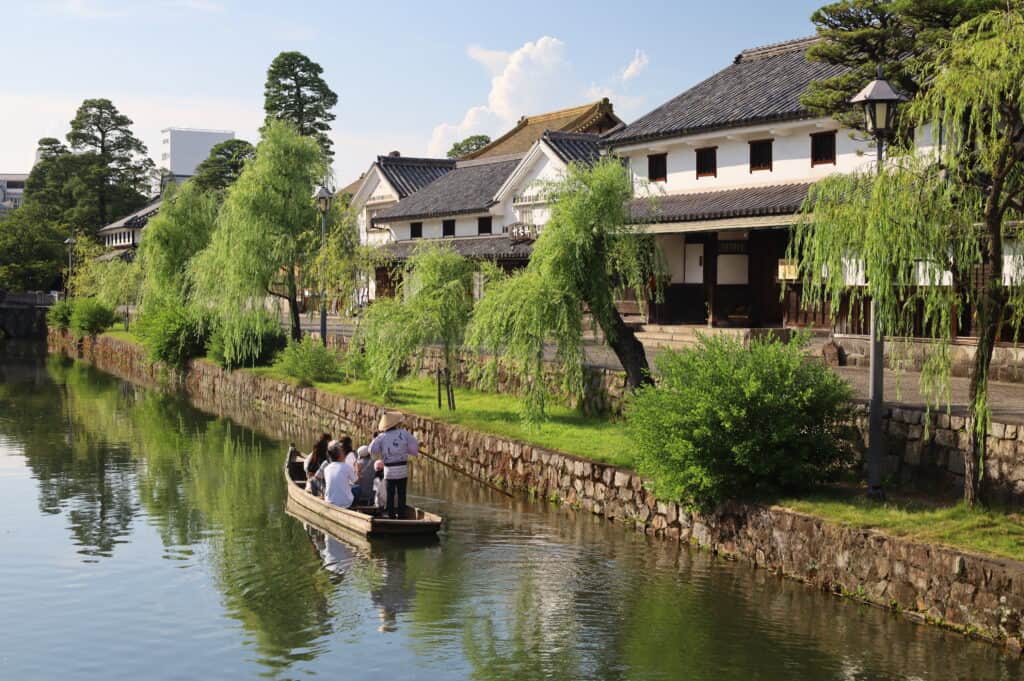
From Kyoto Station: 1h47mins
From Osaka Station: 1h55mins
Tucked away in Okayama Prefecture, Kurashiki is a picturesque city known for its beautifully preserved Edo-period architecture and charming canal-side scenery. It’s also the best place in Japan to find anything made of denim!
The heart of the city is the Kurashiki Bikan Historical Quarter, where you’ll feel like you’ve accidentally time-traveled. Renting a kimono or yukata here will help you fully immerse yourself in this traditional setting, so we definitely recommend giving it a try! If you prefer looking at something more Western, take a stroll to the Ōhara Museum of Art, which houses many interesting pieces of Western art.
Next, head to the ivy-draped Kurashiki Ivy Square, a former textile mill turned cultural complex and the reason why Kurashiki is known as Japan’s “denim capital.” On Kurashiki Denim Street, you can find stylish jeans, quirky denim soft serve (yes, it’s weird but you should give it a try), and indie boutiques for some shopping.
If you want a unique souvenir or denim clothing, you can join a denim-making experience and learn from skilled artisans. It’s a fun way to turn this relaxing day trip into something challenging and even more rewarding!
Since Kurashiki is a port city, maritime protection has been important for centuries. Visit the Achi Shrine, perched on a hill overlooking the city, for a spiritual moment and a lovely view of the sea.
With its mix of heritage, artisanal charm, and local flavour, Kurashiki is perfect for a slow-paced day immersed in culture and craft.
Find more information about Kurashiki HERE
Hiroshima Day Trip
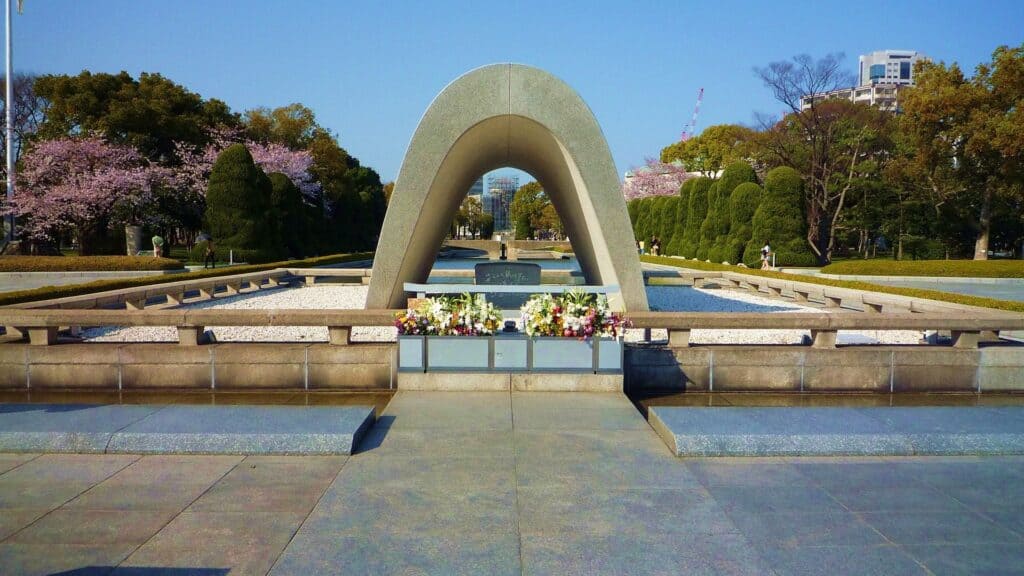
From Kyoto Station: 1h40mins
From Osaka Station: 1h50mins
A day trip to Hiroshima offers a chance to learn about its resilience, poignant history, and stunning natural beauty. Today, Hiroshima is a powerful symbol of peace and resilience, having been the first city targeted by a nuclear attack during World War II. This day trip may carry a heavier emotional weight, but it offers a meaningful and rewarding opportunity to reflect on history and learn valuable lessons for the future.
Not everything in Hiroshima is about the atomic bombing, so you can start your day with a visit to Hiroshima Castle. Originally built in the 16th century, the castle gives you a glimpse into the city’s feudal past.
One of the most powerful places in the city is Hiroshima Peace Memorial Park. Here, key landmarks pay tribute to the victims of the atomic bomb and advocate for world peace. The Peace Memorial Museum has deeply moving exhibits featuring survivor testimonies, artifacts, and photographs that chronicle the devastation and aftermath.
The Atomic Bomb Dome, a skeletal ruin preserved as a UNESCO World Heritage Site, is a stark and haunting reminder of the tragedy. The Memorial Cenotaph and the National Peace Memorial Hall offer solemn spaces for reflection, remembrance, and hope for a future free of nuclear weapons.
This day trip might feel heavy and stay with you, but amidst the shadows of tragedy, you’ll also discover the enduring light of hope, resilience, and the human spirit striving for peace.
Find more information about HERE
Kobe Day Trip
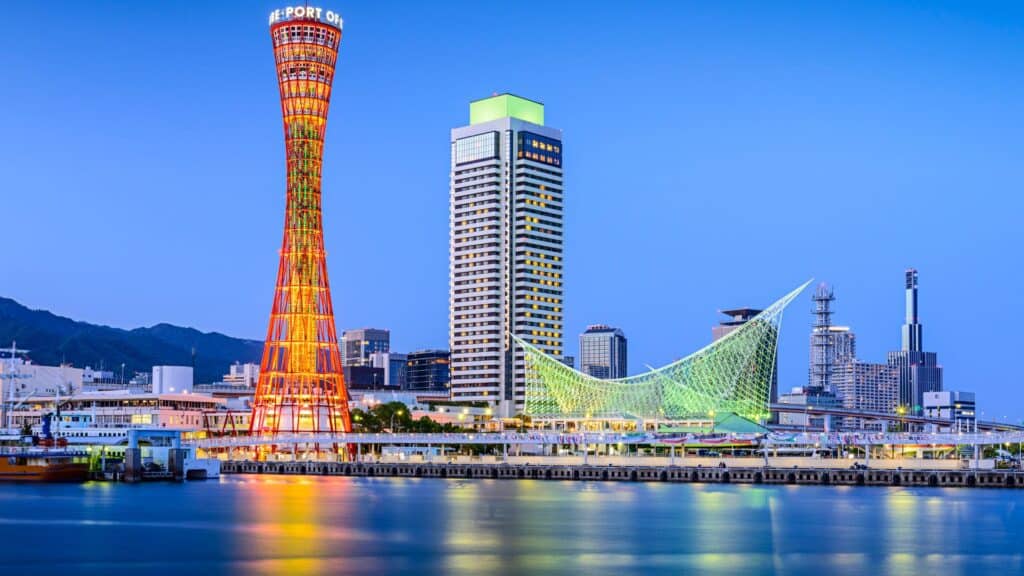
From Kyoto Station: 52mins
From Osaka Station: 22mins
Kobe is a vibrant port city nestled between mountains and the sea, offering a rich blend of Western influence, Japanese tradition, and world-renowned culinary experiences.
You’ve probably heard of Kobe Beef, and this is where it’s from. Known worldwide for its exceptional quality, tenderness, and rich flavour, it’s one of Japan’s most prized culinary treasures. The Wagyu beef’s intense marbling gives the meat a buttery texture that melts in your mouth. Careful breeding, feeding, and care make this a unique taste experience that reflects the region’s dedication to craftsmanship and tradition. While you can find it around the country, you should try it here, in its homeland!
But you probably won’t want beef early in the morning, so start your day with a peaceful escape to the Nunobiki Herb Gardens, one of Japan’s most beautiful botanical gardens. Perched on Mount Rokko and accessible by scenic ropeway, the gardens have multiple terraces filled with aromatic herbs, colourful flowers, and elegant themed spaces.
After the gardens, visit Kitano Tenman Shrine, dedicated to Sugawara no Michizane, the deity of learning. The shrine’s traditional architecture and blossoming plum trees in February create a serene atmosphere, especially appealing to students seeking academic blessings.
If you’re curious about Kobe’s history, take a short walk to the charming Kitano Ijinkan-Gai district. You’ll find beautiful Western-style houses from the Meiji and Taisho periods that tell the story of the city’s early international exchange. These homes, once inhabited by foreign diplomats and merchants, are open for visitors, giving you a chance to step back in time and imagine life during Kobe’s early modern era.
Kobe captivates visitors with world-famous beef, tranquil gardens, and historic homes, offering a perfect blend of flavour, beauty, and history.
Find more information about Kobe HERE
Uji Day Trip
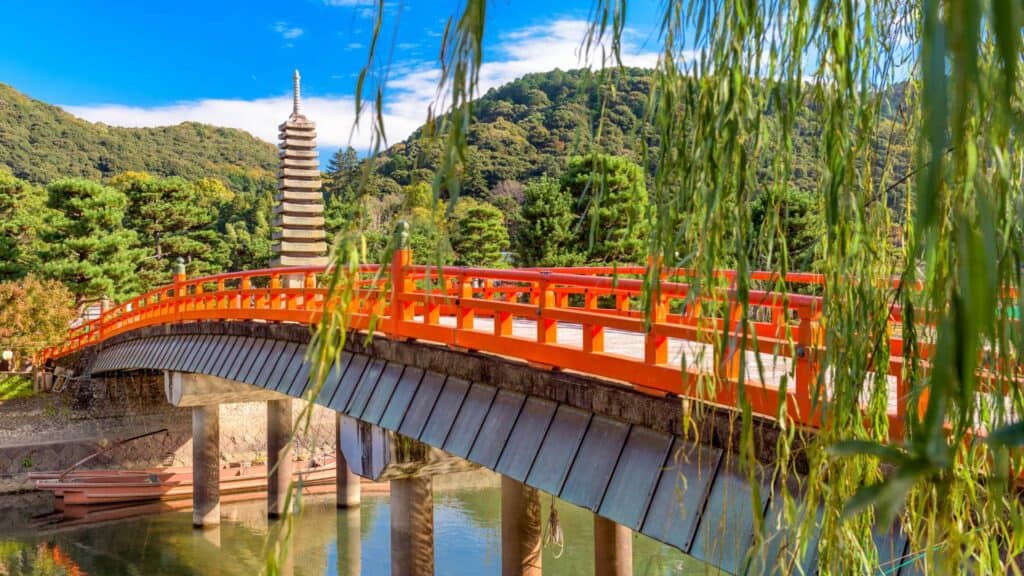
From Kyoto Station: 35mins
From Osaka Station: 1h10mins
Uji is the perfect escape for matcha lovers and those who want a quieter but stunning day. It’s a serene city with a deep cultural legacy that many people skip in favour of visiting Nara.
You’ve probably heard of Uji matcha before, it appears on menus everywhere because it’s arguably Japan’s most famous green tea. Expect to find everything covered or made with Uji matcha here. It’s also the perfect city to pick up a tea set or matcha souvenirs!
Your first stop should be Byōdō-in, a UNESCO World Heritage Site famous for its exquisite Phoenix Hall. This iconic Heian-period structure, featured on the ¥10 coin, has a distinctive shape resembling the wings of a phoenix. The temple gardens offer a great view of the hall, but if you want to learn about Buddhism, the museum and its artifacts will amaze you with their well-preserved statues.
For lunch, we suggest you try some green tea soba (yes, matcha goes in everything here) or local food, and then head to Ujikami Shrine, one of Japan’s oldest surviving Shinto shrines, just a short walk away.
If you’re a serious tea fan or want to learn more about Uji’s tea culture, visit Chazuna, a cultural complex with a tea museum, scenic parkland, and hands-on programs where you can learn about Uji’s tea-growing traditions and even try making matcha yourself. You can also sign up for a tea-related experience, we’ll help you book it!
Uji is a charming day trip that combines serene riverside views, historic temples, and world-famous green tea. It’s an ideal spot to unwind and soak up traditional Japanese culture just outside Kyoto.
Find more information about Uji HERE
Kifune and Kurama

From Kyoto Station: 1h7mins
From Osaka Station: 1h56mins
Tucked away in the northern mountains of Kyoto, the neighbouring villages of Kifune and Kurama offer a refreshing escape from the city bustle. And if you want to visit restaurants where you eat on a platform over the river, at least visit Kifune!
Start with a scenic train ride through narrow valleys and cedar-lined slopes. From Kibuneguchi Station, you can either take a short local bus or enjoy a 30-minute uphill walk through the forest to reach Kifune Shrine, the head shrine of the water deity in Japan. You may have tried omikuji before, but it’s worth trying again here because your fortune only appears when the paper meets water!
The way up is lined with traditional tea houses and seasonal restaurants perched above the river, offering a unique dining experience with cool breezes and the sound of rushing water below.
If you want a peaceful walk through nature, take the Kinone Path that connects Kifune and Kurama with a scenic 40-minute forest trail. The path is known for its gnarled tree roots and towering cedar trees, many centuries old. This sacred route has long been travelled by monks and pilgrims on their way to Kurama-dera Temple, but if hiking isn’t your thing, you can return to Kibuneguchi Station and take the train to Kurama Station.
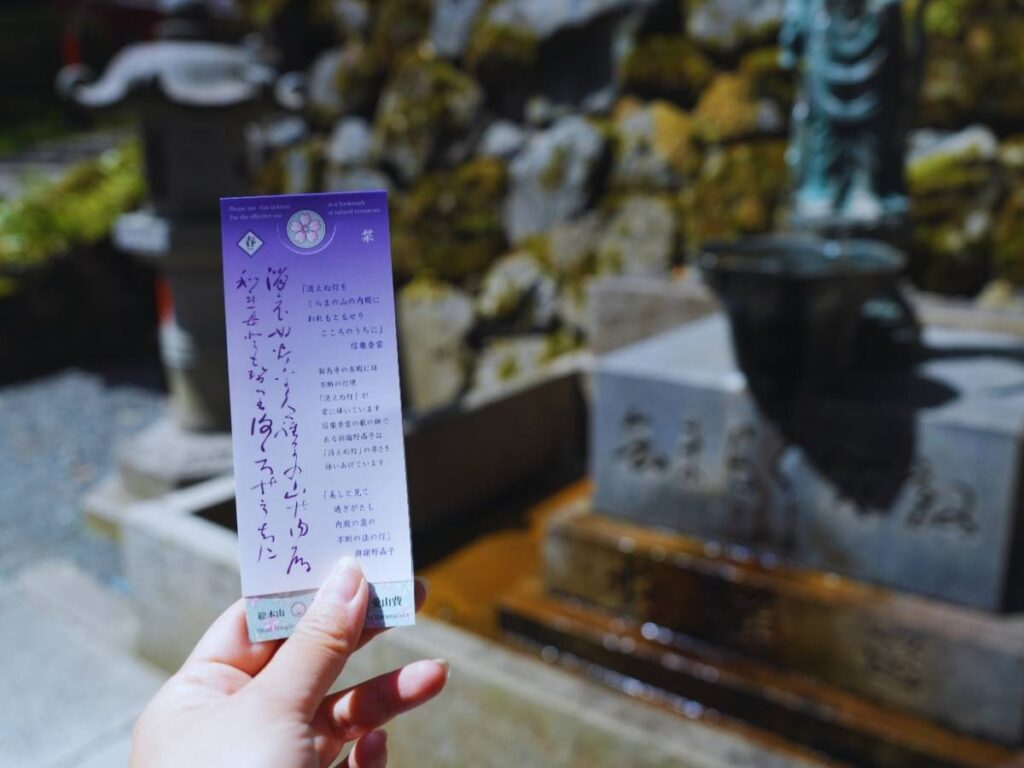
Kurama-dera Temple is nestled on Mount Kurama and is associated with esoteric Buddhist practices. It’s even believed to be the birthplace of Reiki energy healing. Take the cable car to the top and soak in the temple’s timeless spiritual presence.
Your visit wouldn’t be complete without stopping at Kurama Onsen, a rustic hot spring bath set on the mountainside.
Rich in iron and minerals, the spring water helps circulation, skin health, and eases physical fatigue. The open-air outdoor bath offers breathtaking views, with vibrant foliage in autumn and snow-covered trees in winter. Whether you hiked or took the train, you should definitely soak in these waters and recover from all the walking Japan has you doing!
You can use this day trip to skip the busy temples and shrines of Kyoto while also healing some of that tiredness from travelling.
Find more information about Kifune and Kurama HERE and HERE
Miyama Day Trip

From Kyoto Station: 1h35mins
From Osaka Station: 2h
Surrounded by lush mountains and expansive countryside, Miyama gives you a rare and authentic look into Japan’s rural heritage and makes for postcard-worthy pictures!
Located about 30 kilometres north of Kyoto, this peaceful region is best known for its thatched-roof houses, called kayabuki, which dot the landscape in harmony with nature. Miyama’s charm lies in its authenticity, as most of these houses are still inhabited and maintained by locals. Here you’ll see not only traditional architecture but also the rhythms of everyday rural life, where agriculture, craftsmanship, and seasonal festivals remain important to the community.
While there are many villages you can visit, Kayabuki no Sato, or Thatched Roof Village, is the most famous. Here, nearly 80% of the buildings still retain their traditional roofs, making it one of the most visually striking historical districts in Japan.
But this village is not just about the cute-looking houses, there are other places to visit too! Check out the Miyama Folklore Museum, a preserved farmhouse that provides insight into historical rural life, or the Little Indigo Museum, where the legacy of indigo dyeing is kept alive by local artisans, or some rotating museums to get that unique souvenir! And as you probably already noticed, Japan has a Shrine almost everywhere, so you can visit Chiihachiman Shrine or the Kita Inari Shrine, where you might find some locals praying for good crops!
Miyama’s natural beauty and historic ambiance give you a deep sense of connection to Japan’s pastoral past, making it a refreshing alternative to the country’s more urban destinations.
Find more information about HERE
Himeji Day Trip

From Kyoto Station: 1h6mins
From Osaka Station: 1h25mins
A day trip to Himeji offers the perfect blend of majestic history, serene gardens, and forested temple retreats. Here you’ll learn about defensive castle techniques and even get to see one of the filming locations for The Last Samurai.
At the heart of the visit is the famed Himeji Castle, one of Japan’s most iconic landmarks and the favorite castle of many people! Often referred to as the White Heron Castle for its brilliant white exterior and elegant, soaring silhouette, it is a masterpiece of traditional Japanese architecture. As a UNESCO World Heritage Site, it has withstood wars, natural disasters, and the passage of time with remarkable grace.
Just a short walk from the castle lies Kokoen Garden, a peaceful retreat featuring nine exquisitely designed traditional gardens. Each one is crafted in a different style—tea gardens, bamboo groves, koi-filled ponds, and more—providing a calm counterbalance to the grandeur of the castle. Kokoen beautifully captures the spirit and aesthetic precision of classical Japanese garden design, making it an ideal place to unwind amidst nature and tradition.
If you’re up for a walk, head to Mount Shosha, a peaceful, forested mountain home to the beautiful Engyō-ji Temple, which you can reach by ropeway. With its wooden halls and mossy paths, the temple feels like a quiet escape into nature, and it even appeared in the film The Last Samurai.
If you have a bit of extra time and like digital art, don’t miss the small teamLab art installation tucked away in the grounds, as it’s a lovely surprise that mixes tradition with a touch of modern magic. Whether you’re into samurai movies and history, love exploring quiet temples, or just want to see some unique art, a day trip to Himeji has a bit of everything to keep you inspired and relaxed.
Find more information about Himeji HERE
Kinosaki Day Trip
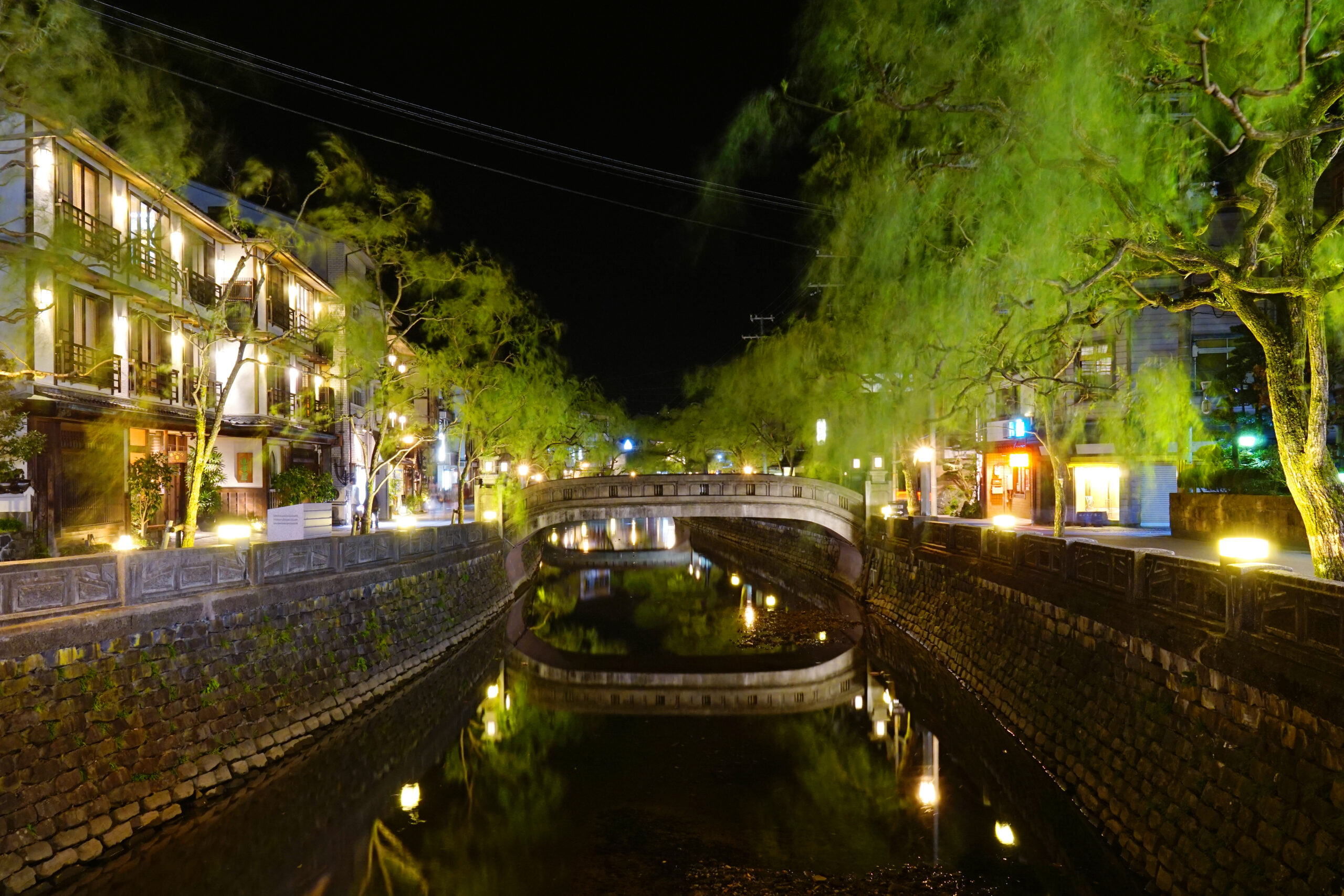
From Kyoto Station: 2h49mins
From Osaka Station: 3h6mins
Kinosaki is all about slowing down and soaking in the moment, and we mean that literally! Slip into a yukata, wander through the charming town, and take your time relaxing in the different onsen as a gentle way to unwind from all the walking and travelling.
Kinosaki offers a nostalgic escape into the heart of old Japan, with a walkable layout inviting travellers to stroll leisurely from one bathhouse to the next. There are seven public baths, each with its unique style, from cave-like interiors to temple-style facades, and together they create a ritual-like journey through warmth and renewal. The bathing experience isn’t rushed here; it is meant to heal and relax you.
But of course, you might want to do more than soak in warm waters! In that case, you can visit Onsenji Temple, perched partway up the forested hillside and reachable by cable car. The temple itself is modest, yet dignified, a spiritual centre long tied to the town’s bathing traditions.
If you’re interested in literature, visit the Kinosaki Onsen Heritage Museum, dedicated to the Taishō-era writer Shiga Naoya, and leave Kinosaki with a rested body and a new author to explore. Kinosaki Onsen offers more than a destination, it offers a rhythm of life rarely found elsewhere. For a single day, it invites you to step into a slower time, where the warmth lingers long after you leave and where you get to recharge for the rest of your Japan trip!
Find more information about Kinosaki HERE
Amanohashidate Day Trip
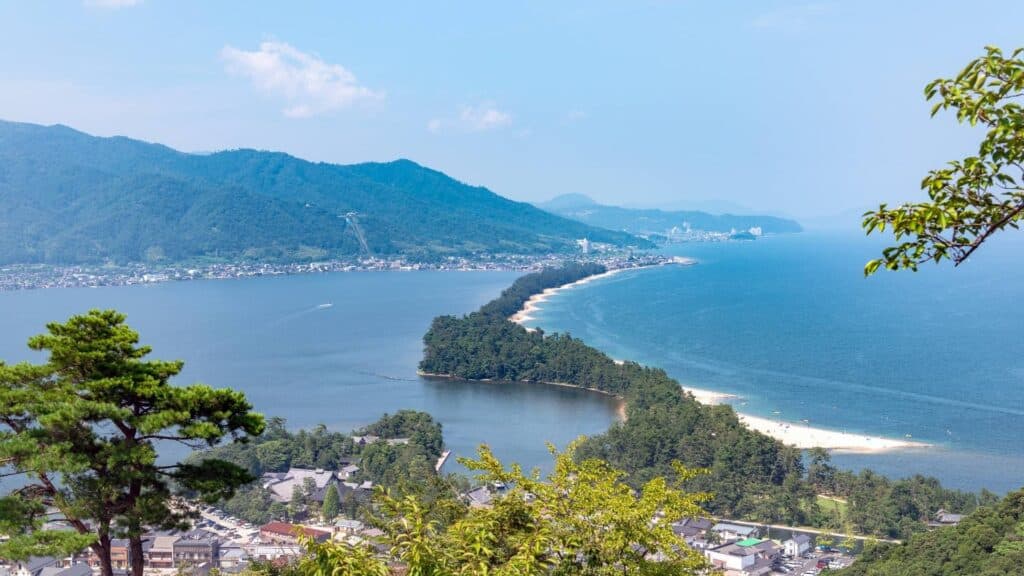
From Kyoto Station: 2h14mins
From Osaka Station: 2h50mins
Amanohashidate, often called the “bridge to heaven,” is celebrated as one of Japan’s Three Scenic Views and offers a serene escape from the cities, about two hours from Kyoto or two and a half hours from Osaka.
The best way to start is by visiting Amanohashidate View Land, reached by a short cable car or chair lift ride, where you can enjoy a breathtaking panoramic view of the sandbar and bay below. This vantage point is famous for the traditional way of viewing the landscape by bending forward and looking at it upside down, which is said to resemble a pathway to heaven.
Then you can stroll or cycle along the peaceful, pine-lined path that gently separates the sea from the bay.
The 3.6-kilometre stretch is flat and easy to navigate, perfect for a leisurely exploration. Along the way, there are several small shrines, including the historic Kono Shrine, known for its tranquil grounds and deep roots in the area’s spiritual history.
In the afternoon, consider taking a boat cruise around Miyazu Bay, which provides a refreshing perspective of Amanohashidate from the water and often includes informative commentary about the region’s natural and cultural significance.
Before coming back, you can visit Miyazu city to shop for local crafts or relax before heading back to Kyoto or Osaka by train. Amanohashidate is an ideal day trip destination for those seeking a blend of natural beauty, cultural heritage, and a peaceful atmosphere within easy reach of Japan’s urban centres.
Find more information about Amanohashidate HERE
Awaji Day Trip
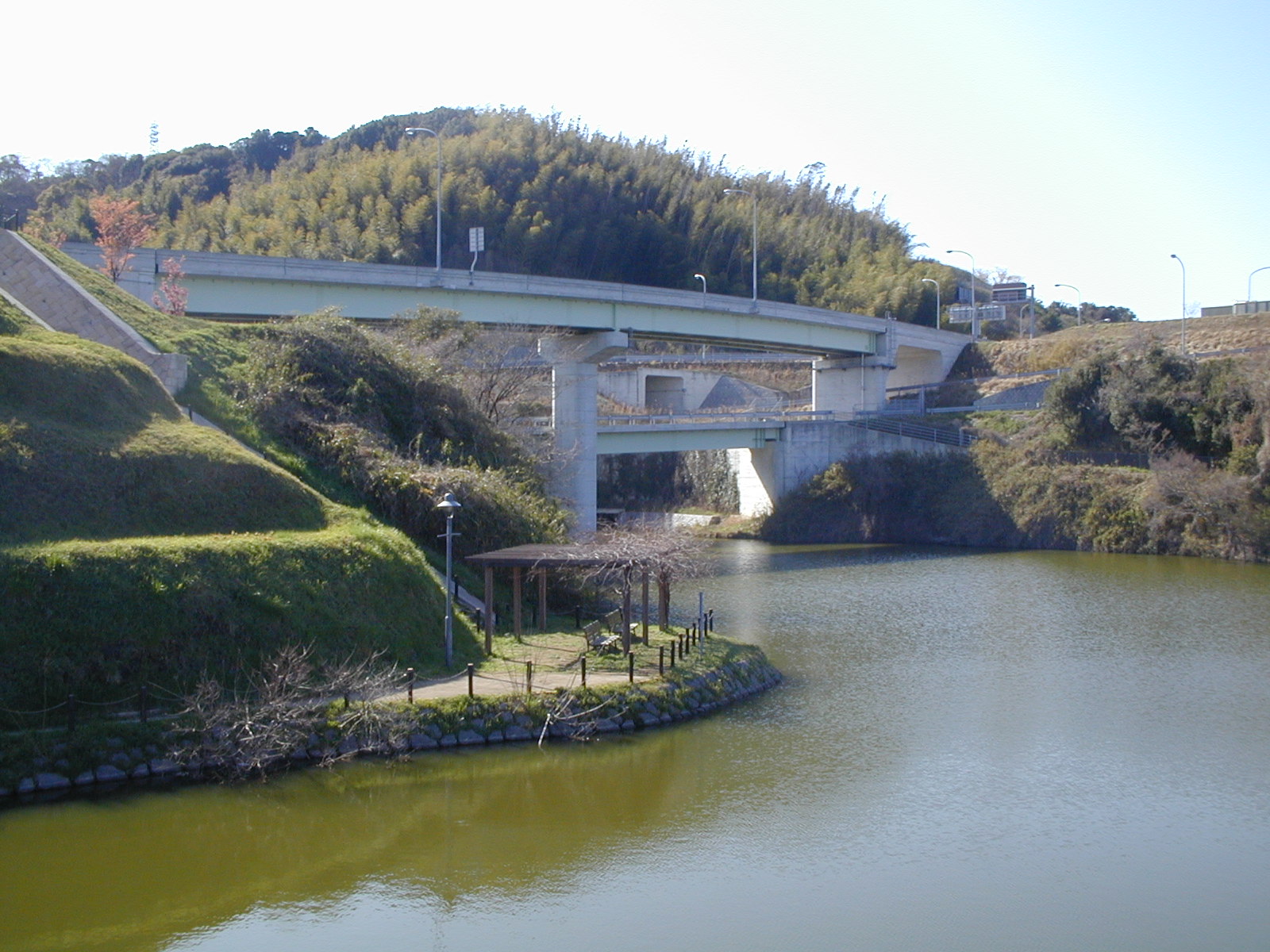
From Kyoto Station: 2h28mins
From Osaka Station: 2h4mins
A day trip to Awaji Island is a journey into natural beauty, mythology, and modern creativity.
If you’re looking to experience something more traditional, do not miss the Awaji Puppet Theatre, where the centuries-old tradition of Ningyō Jōruri, or Japanese puppet theatre, is preserved, with performances accompanied by live narration and music.
Awaji offers a blend of nature and modernity, so you can visit Awaji Yumebutai, a stunning architectural complex designed by Tadao Ando. Originally conceived as part of a restoration project after a devastating earthquake, the site now combines gardens, open-air theatres, and a conference centre, harmoniously blending concrete structures with lush greenery.
Not far away is the Awaji Hanasajiki, a vast flower park that blooms in seasonal waves of color from bright tulips in spring to cosmos in autumnoffering panoramic views over Osaka Bay and gorgeous pictures
Meanwhile, contemporary attractions like HELLO KITTY SMILE and the immersive NIJIGEN NO MORI park (where Naruto Land, Dragon Quest Island, and the famous Godzilla zip line are found) bring playful modernity to the island. These will likely take half of your day, so plan accordingly if you wish to visit them and check the tickets in advance!
Whether you’re drawn by nature, tradition, or modern culture, Awaji Island promises a refreshingly diverse and memorable escape from the city.
Find more information about Awaji, click here.
Koyasan Day Trip
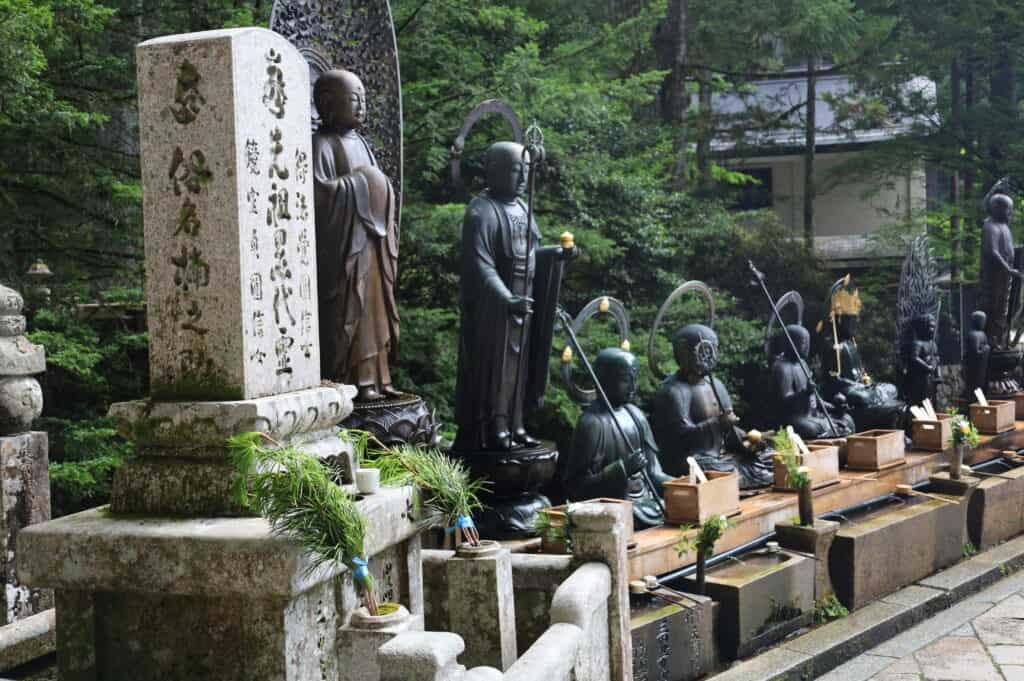
From Kyoto Station: 3h4mins
From Osaka Station: 2h32mins
High in the forested mountains of Wakayama Prefecture lies Koyasan, a secluded monastic town wrapped in cedar forests and shrouded in centuries of spiritual tradition.
This mountain top sanctuary remains the heart of Shingon Buddhism and a place where time seems to slow.Begin your trip at Daimon Gate, flanked by massive guardian statues and towering trees. This monumental gate marks the symbolic entrance to the sacred precincts and sets the tone for what lies ahead.
Near the gate, you’ll find quiet reminders of Koyasan’s unique history, where women were once forbidden from entering the sacred mountain core. Instead, they prayed at halls just outside, like the remains of Daimon-guchi Nyonin-do and the nearby Nyonin-do Hall, which still stands as a peaceful place to reflect on those old traditions. Wandering deeper into town, one reaches the Danjo Garan, the spiritual centre of Koyasan.
But the most profound experience is in the east, where a shaded path leads into Okunoin Cemetery, Japan’s largest and most sacred graveyard. Filled with tombstones, lanterns, and mossy statues, it’s home to Kobo Daishi’s mausoleum.
For those interested in Buddhist art and history, the Koyasan Reihokan Museum offers a curated look at centuries of religious objects, mandalas, and ritual tools. The delicate detail and craftsmanship on display provide a fascinating counterpoint to the rustic simplicity of the surrounding temples.
Whether you’re drawn by spiritual curiosity, historical interest, or simply the desire to see a quieter side of Japan, Koyasan rewards visitors with its timeless beauty and profound stillness.
Find more information about Koyasan HERE
Lake Biwa Day Trip

From Kyoto Station: 21mins
From Osaka Station: 1h10mins
Lake Biwa, Japan’s largest freshwater lake, is a stunning natural treasure located in Shiga Prefecture, just a train ride from Kyoto. Its vast waters stretch over 670 square kilometres, providing a serene backdrop for outdoor enthusiasts, nature lovers, and cultural explorers.
One of Lake Biwa’s unique charms is its rich biodiversity, including endemic fish species and migratory birds, which can be enjoyed at the many lakeside parks and nature reserves. The Biwako Ohashi Bridge offers spectacular views over the lake and is an iconic symbol of the region.
Once you arrive at Otsu, take your time to enjoy the port, as there are many activities for you to join, like cycling routes, water sports, or even a sightseeing cruise that will take you to some of the islands of Lake Biwa.
If you are looking to visit or take a perfect picture at a floating shrine (and don’t wanna wait in line at Hiroshima’s Itsukushima Shrine), then hop on a train to Shirahige Shrine and take in the gorgeous Torrii gates that rest calmly amidst the lake.
But if you’re looking for a more secluded yet extremely relevant historical place to visit, then Enryaku-ji Temple is your go-to. It is quite far from the Otsu Area, so it’ll take you some time to get there, but the serene forests and sweeping views of Kyoto and Lake Biwa that Enryakuji provides will be worth it. Perfect not only as a spiritual retreat but also a place of cultural and historical significance, you will go back to Kyoto with one UNESCO Heritage site marked off your list!
Whether you’re cruising its calm waters, exploring the city, or simply soaking in the views, it’s a peaceful escape that adds a breath of fresh air to any itinerary.
Find more information about Lake Biwa HERE
Hikone Day Trip
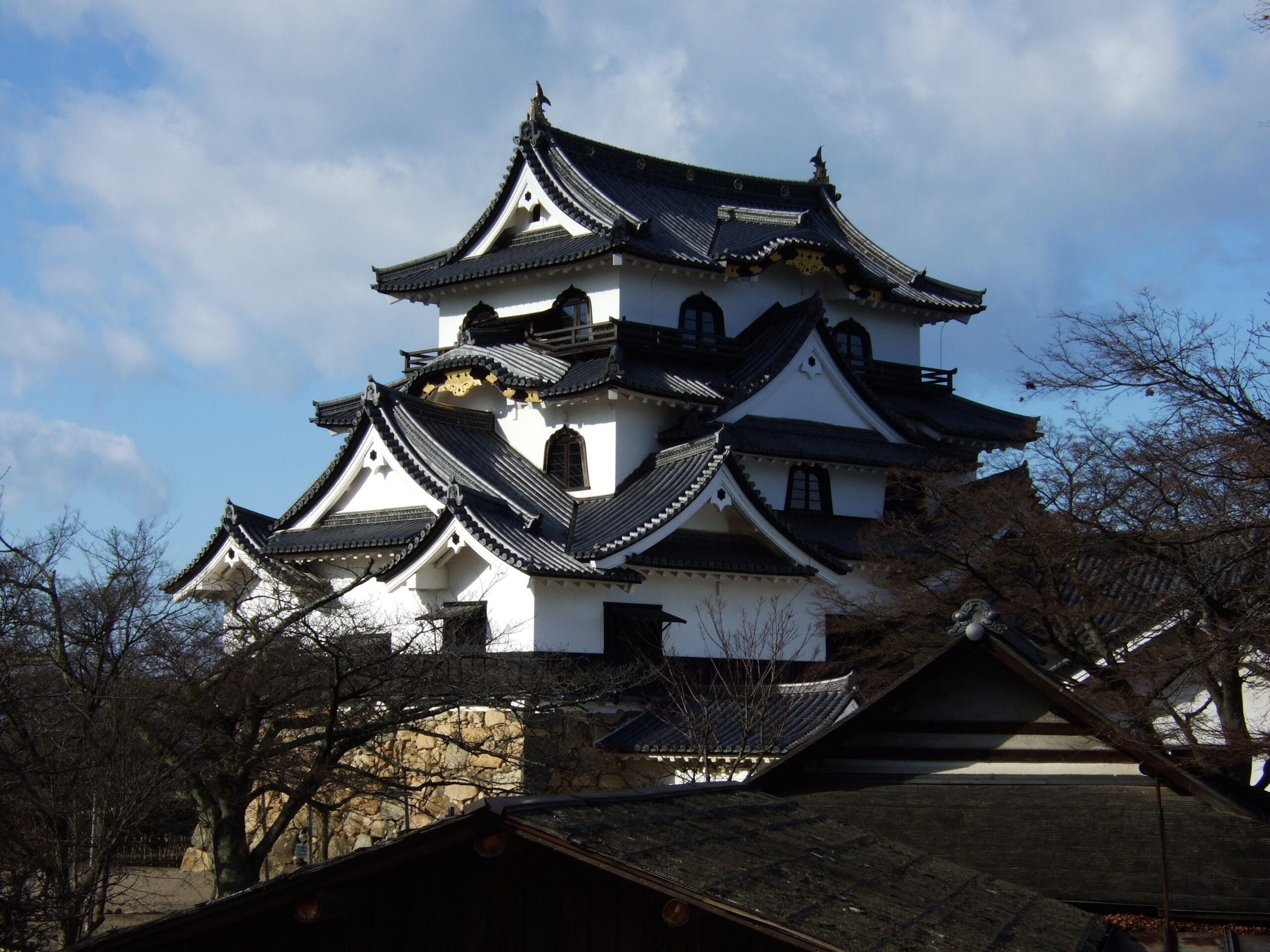
From Kyoto Station:1h14mins
From Osaka Station: 1h45mins
Nestled on the eastern shore of Lake Biwa, Hikone is a charming city that beautifully combines historical heritage with scenic beauty.
The must-visit sight in Hikone is Hikone Castle, one of Japan’s few original castles still standing since the Edo period. Its well-preserved wooden interiors (yes, you can actually go inside!) and elegant white walls offer visitors an authentic glimpse into samurai-era architecture and culture. Don’t miss the Genkyuen Garden, especially stunning during cherry blossom season, drawing photographers and history lovers alike, but the gardens are lovely even during other seasons.
Beyond the castle, Hikone’s old town streets invite you to explore traditional shops, quaint cafes, and local eateries. Here, you can sample regional delicacies and browse crafts that reflect the area’s rich cultural tapestry.
If you happen to be a fan of the famous Rurouni Kenshin Live Action movies, then you will likely recognize some of these places, as they were used to film some fight scenes! Hikone also hosts various festivals throughout the year, such as the Hikone Festival with its vibrant samurai parades, which add a lively atmosphere and a chance to experience local traditions firsthand.
Whether you’re a history buff, nature lover, or simply seeking a relaxing day trip from Kyoto or Osaka, Hikone offers a perfect blend of culture and charm.
Find more information about Hakone HERE
Conclusion
Yes, we know, you probably don’t have a bunch of free days to squeeze in all of these, but that’s okay! You can pick your day trip based on how close it is to the city you’re staying, or on what it offers! Not everyone loves matcha, and Kobe beef also doesn’t charm every meat lover, but whether you’re drawn by ancient castles, tranquil gardens, spiritual retreats, or relaxing hot springs, these day trips from Osaka and Kyoto offer something special for every traveller.
They provide a wonderful chance to step off the beaten path, soak up local culture, and create lasting memories beyond the city lights.
And to make your exploration even easier, we offer guided day tours that take care of all the details, so you can fully enjoy every moment without the hassle. Why not make the most of your trip and explore some of these incredible destinations nearby?



